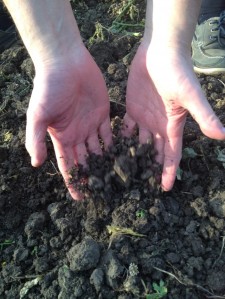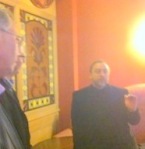Do you know all the icons on your WordPress editing menu? Read more Read more…
Press Release Dos and Don’ts
My knowledge is based on writing press releases for 20 years as a publicist for Ekome African Dance Company, author Rosalyn Chissick and many many more.
Then, as Soil Association magazine editor for eight years, I was sent press releases. So I got to see press releases from both sides.
What is a press release? It is content to promote something. Instead of paying for an advert, you are hoping your press release is so newsworthy that an editor will use it as editorial (copy) in a publication, or as a feature for radio or TV.
Press Release Dos and Don’ts
1. Think about your email subject line. Editors are crazy-busy. Will they even open your email? Give a date so editor knows how urgent it is.
2. Keep it short. Remember your crazy-busy editor. The most important information comes first. Five short paragraphs are enough to tell the story.
3. Start the press release: For immediate release (or: embargoed until…). That way the editor knows immediately when the content of the press release can be published by the editor.
4. Do give contact information (name, mobile) at the top of the press release and say who it is from. Please make it as easy as possible for your busy editor.
5. The heading and/or sub-heading needs to tell editor why it is news and relevant to her/his audience – is it first/new/final/famous/biggest/local?
6. Your five most important paragraphs concern:
When? – Date, time
Where? – Location
Who? – Correct names and titles of main people and/or event
What? – What is this all about and why is it important?
How? – How do I get involved/buy tickets
7. Do send a press release before an event (not after).
8. Don’t whinge or exaggerate. No hyperbole. Give the facts. Imagine your press release in print.
9. Use a quote from a key player to bring press release alive. Quotes are the only places you can use adjectives and express emotion.
10. Give background detail as numbered Editor’s Notes after the main 5 paragraphs.
11. Editor’s Notes can include links to company or cause’s website, Facebook and Twitter – using Facebook and Twitter (or other social media channels) creates live engagement. It’s a two-way conversation.
12. Don’t send the press release as an attachment, which are rarely opened. However, a good strong image will encourage an editor to use it. Think about sending a low-res image to start with.
13. Do think about using Mail Chimp – free email manager to keep press releases and press contacts in one place. I myself now favour simple press releases as they are more likely to be noticed.
14. Do read your press release aloud. Does it say what you want to say? Have you given the most important information, first? Any repetition is a no-no.
15. Do ask someone else to read it. Ask your reader: is there anything you do not understand? If so, what? Don’t get annoyed by the answer. Responsibility for successful communications lies with the communicator.
16. Do make sure main people involved are happy with press release and sign it off before you send it.
17. Check name of current editor – only send relevant and timely press releases.
18. Do ring after you have sent press release to ask if press release has arrived and if it is of interest. This is an appropriate way to form or develop a relationship with the news/features editor.
19. Don’t leave an answer machine message asking the editor to ring you back – it is unlikely they will. (If you have to, speak your telephone number clearly and do not gabble. I lost count of the times, people gave the number too fast to get it down the first time.).
20. Do create a Google news alert for your news item to track any online publication.
Well, that’s not exhaustive. But it is a start.
What else would you like to know?
Narrative thread with Andrew Davies
Here is Andrew Davies at the Animations Encounters festival in Bristol today on Narrative thread.
TV writer and screenplay author, Andrew Davies, says: Narrative nowadays is fashionable and so is the word. It has even spread to politics and advertising: “We need a coherent narrative”, as they say.
He says: “I briefly argue that all narrative is adaptation.”
Every time a book is read it is adapted uniquely by the reader.
Indeed, he asks: Is there a such a thing as pure experience?
Andrew Davies offers detailed examples of “inter-textuality” which he kindly translates as nicking things from other people’s work.
He starts with his successful TV series: A Very Particular Practice.
“I was trying to make something unique,” including a unique mix.
This mix included the idea of the campus novel by David Lodge, and typical archetypes from medical dramas, but subverted i.e. the young doc was “emotionally fucked-up”, and not dashing.
The characters all had a “narrative of illness”, he says. Bob Buzzard, “my favourite character to write, a Thatcherite who saw the human body as a messy, inferior version of a machine,” says Andrew Davies. “He just hated people.”
He showed a clip from the TV show, A Very Peculiar Practice.
And then to Davies’ adaptation of Pride and Prejudice.
His producer and he decided Jane Austen’s novel was to do with “sex and money”.
“It’s the ‘selfish gene’ inside Darcy’s breeches…” that is driving the plot, he says. Wanting to stress the body not the mind, he devised scenes where people had had a bath etc.
Not to mention, of course, the famous scene of Darcy unbuttoning his shirt ready for a dip. (But hey, he swum clothed as the clip reminds us.)
Davies said he never conceived it as a sexy scene but rather to emphasise Darcy’s physicality and relief being back in his country pad after the artificiality of town. He wanted Colin Firth stark naked but the actor objected.
(Actor would not have got away with this if he’d been actress. Ed).
Andrew Davies’ tip: take something that has already worked, such as Shakespeare, grabbing the bits you like and recasting it as modern drama.
Especially suited for those who find inventing from scratch does not come easily, he says.
“Don’t be ashamed because ‘they’ all did it too.” Including, of course, Shakespeare.
As Davies did with his Othello, recasting him as the UK’s first black police commissioner. Davies also wanted to give Iago clearer and different motivations. So Davies recast his Iago (Jago) as superior in rank to Othello, who never saw himself as racist until Othello was promoted above him…
The Chatterly Affair was about the obscenity trial surrounding DH Lawrence’s book. Davies laughs when he tells of the praise he got from the producer for his idea of two on the jury having an affair, echoing Lawrence’s novel.
Questions from the floor reveal: Davies says he does very little research before writing and checks his facts later – “some writers get bogged down in research.”
“Just clicking with someone powerful in the business,” says Davies is what led to success. Before that, he kept getting “discovered then dropped and forgotten about for five years”.
Davies: “Always try to have something out there before something comes thudding back.”
How do you sift through huge amount of material such Vanity Fair? someone asked from the audience. He boiled down the story to bad girl, good girl, and made sure every scene related to that theme.
Another tip: ensure the resolution is in the hand of the protagonist, he says quoting screenwriter, Robert McKee.
Davies’ new adaptation, South Riding, is set in Yorkshire in the 1930s – a time of recession and poverty, in which he is trying to make “exquisite links” with the present.
He was going to do “another huge Trollope” but BBC has changed its mind, although “they will change it again,” he reckons.
The hardest bit about writing, he says, is the first page, and the usual self-doubt: “I can’t do this.”
Someone else asks for tips for getting noticed.
Davies: “Just write wonderful things.”
As his agent would often tell him:
“Talent always wins through in the end.”
Do bloggers need a union?
I am a union person.
I have belonged to the National Union of Journalists (NUJ) for as long as I’ve been a freelance journalist.
The NUJ has got me out of a few scrapes over the past 20 years. Helped me claw back fee due from a national newspaper. Supported me when a publication dissed my rep.
I do not begrudge my union dues because they insure me for future grievances and in the meantime help some other poor bugger.
I know my history – without unions, workers would still be working a 12-hour day. (As many still do).
On the 22 and 23 October 2010, my local branch, the Bristol NUJ, asked: What’s the blogging story?
Research conducted for the union shows there are 20,000 workers in digital new media in the Bristol area.
Note: the term blogger here includes those creating online content.
As a union gal already paying union fees for my printed work, I would LOVE my online work to be covered too.
Several made the point that bloggers certainly help journalists: with their original and brave research, said Iqbal Tamimi; and with technical expertise, said Tomas Rawlings.
From a union’s point-of-view, thousands of unregulated online workers must be a dream. Both the NUJ’s fortune and its collective bargaining power would swell magnificently.
Mind you, some journalists are nervous of bloggers – many of whom work for nothing. So bloggers could be seen as undermining the profession.
Leaving that underlying tension aside, I wondered as a blogger whether union membership – being accredited by a professional body – might give visitors more confidence in a site.
Visitors could clearly see I subscribe to the NUJ Code of Conduct (although there is nothing stopping any writer adhering to it, I found out).
However – said the devil’s advocate in my mind – is not the point of today’s web that a blog is authenticated by its comments and the transparency of the blogger?
And HOW would the NUJ assess who is a digital worker, especially if he/she is an unpaid blogger?
(There is a precedent for a blogger becoming an NUJ member.)
Bloggers are a notoriously independent breed. Does belonging to a union undermine that spirit?
In response, Sarah Ditum pointed out the days of “happy anarchy on the web” may be numbered – digital workers would be wise to have union support, including access to legal training.
As you can see, this fascinating topic raises a host of questions.
Here are a few more.
Bloggers, can you think of situations where you might have welcomed union support? Even to combat the isolation of being freelance?
Or is a union anathema to bloggers?
Do bloggers need a union?
What do you think?






